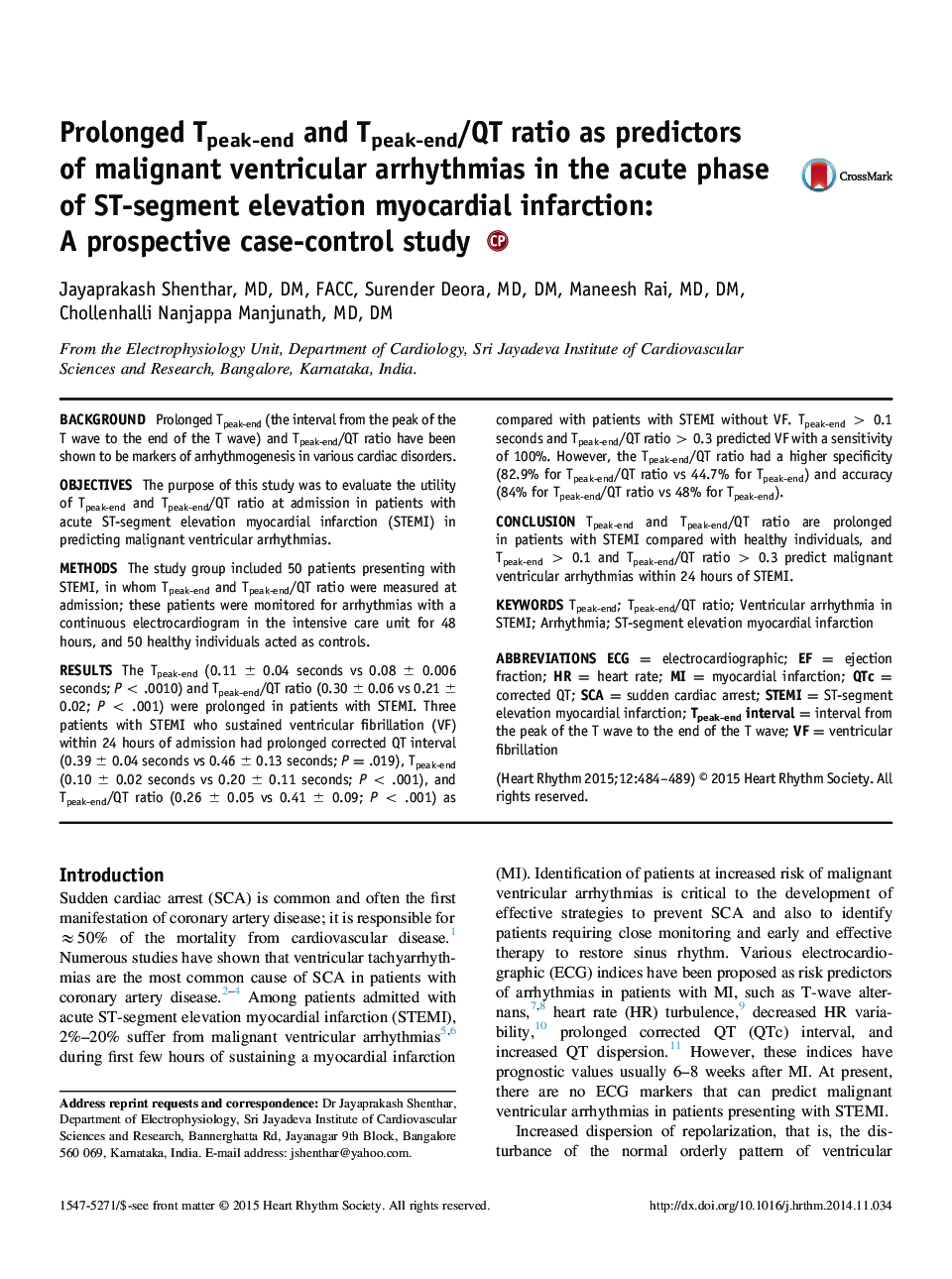| Article ID | Journal | Published Year | Pages | File Type |
|---|---|---|---|---|
| 2921868 | Heart Rhythm | 2015 | 6 Pages |
BackgroundProlonged Tpeak-end (the interval from the peak of the T wave to the end of the T wave) and Tpeak-end/QT ratio have been shown to be markers of arrhythmogenesis in various cardiac disorders.ObjectivesThe purpose of this study was to evaluate the utility of Tpeak-end and Tpeak-end/QT ratio at admission in patients with acute ST-segment elevation myocardial infarction (STEMI) in predicting malignant ventricular arrhythmias.MethodsThe study group included 50 patients presenting with STEMI, in whom Tpeak-end and Tpeak-end/QT ratio were measured at admission; these patients were monitored for arrhythmias with a continuous electrocardiogram in the intensive care unit for 48 hours, and 50 healthy individuals acted as controls.ResultsThe Tpeak-end (0.11 ± 0.04 seconds vs 0.08 ± 0.006 seconds; P < .0010) and Tpeak-end/QT ratio (0.30 ± 0.06 vs 0.21 ± 0.02; P < .001) were prolonged in patients with STEMI. Three patients with STEMI who sustained ventricular fibrillation (VF) within 24 hours of admission had prolonged corrected QT interval (0.39 ± 0.04 seconds vs 0.46 ± 0.13 seconds; P = .019), Tpeak-end (0.10 ± 0.02 seconds vs 0.20 ± 0.11 seconds; P < .001), and Tpeak-end/QT ratio (0.26 ± 0.05 vs 0.41 ± 0.09; P < .001) as compared with patients with STEMI without VF. Tpeak-end > 0.1 seconds and Tpeak-end/QT ratio > 0.3 predicted VF with a sensitivity of 100%. However, the Tpeak-end/QT ratio had a higher specificity (82.9% for Tpeak-end/QT ratio vs 44.7% for Tpeak-end) and accuracy (84% for Tpeak-end/QT ratio vs 48% for Tpeak-end).ConclusionTpeak-end and Tpeak-end/QT ratio are prolonged in patients with STEMI compared with healthy individuals, and Tpeak-end > 0.1 and Tpeak-end/QT ratio > 0.3 predict malignant ventricular arrhythmias within 24 hours of STEMI.
